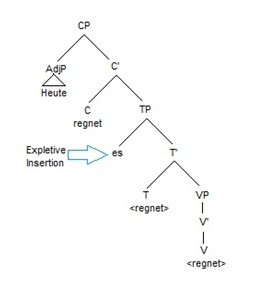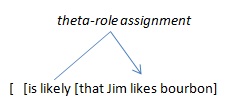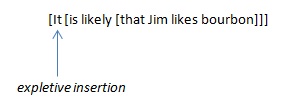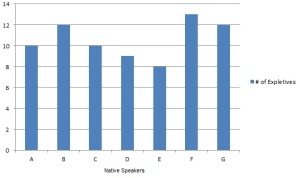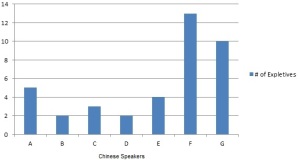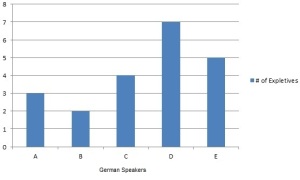Part I: Rhetorical figures in science
I recently suggested that a parallel can be drawn between genetic evolution and the evolution of linguistic structures.
Is that a fair comparison? Is the language/genes metaphor appropriate?
I’ll attempt to answer that question in a series of posts. To begin with, however, we need to keep in mind that a metaphor is only valuable if it somehow aids research. A metaphor is, after all, a figure of speech, a comparison of unlike items. Unless it allows researchers to pose new questions, make new predictions, or guide inquiry in a new direction, then a metaphor at best offers a Sagan-esque elucidation, or, at worst, a misleading equivocation.
So, before interrogating the language/genes metaphor directly, I’ll use this post to look at the intersection of scientific research and a specific rhetorical figure–the incrementum, aka auxesis–in order to see what productive, generative figuration looks like more generally.
Jeanne Fahnestock’s Rhetorical Figures in Science is one of the most well-researched books on the subject. The book’s overall thesis is that rhetorical figures—which are syntactically available in all Indo-European and Sino-Tibetan languages, if not all languages full stop—that rhetorical figures offer scientists a way to “epitomize” their reasoning, to put complex information into a condensed (and thus easily evaluated) form.
Rhetorical figuration is what many people mean by ‘logical’ thinking. Pure logic is Aristotelian, deductive, syllogistic. However, not all rational thought proceeds by way of a syllogism. There are other lines of reasoning, as well, and since the time of the Greeks, most have been catalogued as the common topics and the rhetorical figures. The special characteristic of rhetorical figures is that they can encapsulate reasoning in a starkly precise form; herein lies their potentially productive power.
Fahnestock writes:
The figure is a verbal summary that epitomizes a line of reasoning. It is a condensed or even diagram-like rendering of the relationship among a set of terms, a relationship that constitutes the argument and that could be expressed at greater length. (24)
Of course, Fahnestock is sure to point out that not all reasoning—scientific or otherwise—can be epitomized formally via a rhetorical figure. The point is, figures are there as linguistic resources and sometimes scientists can use them to clarify their ideas . . . and to guide their research.
Fahnestock’s book explores the use of figuration in scientific literature, from Newton to materials engineering journals. One example she provides is particularly famous: Thomas Huxley’s search for the inorganic primordial soup that, he believed, had given rise to organic matter.
In his lab, Huxley had studied muddy ooze from the bottom of the ocean and found nothing of interest . . . until, ten years later, he “reexamined his bottled specimens under the microscope [and] discerned gelatinous bodies in the muck, bodies that he took to be the preserved specimens of loosely structured living forms, amorphous masses of protoplasm newly identified as the universal stuff of life” (Fahnestock 86). Huxley, it seemed, had discovered the Urschleim, the missing link between inorganic matter and organic life.
For Huxley and all early supporters of evolution, an exigent question was how organic life arose from inorganic substance. We might say ‘logic’ told Huxley that some mediating substance must exist or had once existed, but really, it is rhetorical figuration that allows the thought to be constructed, a substitution of A/B for A/somewhere between A and B/B. Or, in Huxley’s case, Inorganic/Bathybius haeckelii/Organic.
For Huxley, organic/inorganic was itself a rhetorical figure—an antithesis, or juxtaposition of contraries in parallel form. And, as Fahnestock points out, one way to break up an antithesis is with another figure—an incrementum—to show that the antithesis is simply two isolated steps in a larger, hitherto undiscovered series. An incrementum, then, is a series-making figure, one of many. And because series reasoning is particularly important for scientific thought, series-making figures can play a productive role in guiding scientific research, even when, as in Huxley’s case, the new research leads to a dead end.
Fahnestock again:
If species evolved from each other with no need for special creation, where did the first living form come from? How was the gulf between the inorganic and the organic first crossed? Huxley’s bathybius offered a potential answer to this immediate question and at the same time seemed to fulfill the speculations [the rhetorically figured speculations!] of the early nineteenth-century Naturphilosoph Lorenz Oken, who imagined that life had originated as an “Urschleim,” a “primitive mucous substance” generating itself from inorganic constituents in pools of sea water. Ernst Haeckel [another early Darwinian] seized on the possibility that bathybius generated itself spontaneously on the ocean floor and, as a structureless homogenous cellular material, represented the simplest of possible life forms. In this way, bathybius was rhetorically amplified by Haeckel and others into a vast layer of primitive living matter lying along the interface between rock and teeming sea, a widely distributed middle term between the inorganic and organic worlds. (87)
Unfortunately for Haeckel and Huxley, bathybius was neither primitive nor living. It was simply the byproduct of a chemical reaction called precipitation. They both admitted their mistake and moved on. However, the exigent question they were attempting to answer was and remains important, and we can thank series reasoning (the incrementum) for the rational and precise framing of the question.
Today, of course, biologists know there is no single item that bridges the antithesis organic/inorganic. And yet, there is
no reason to limit antithesis-mediating to a single third term; a coherent series of terms can be used instead. Currently, the search that inspired Huxley and Haeckel for a way to bridge the antithesis between the living and nonliving is being carried on by molecular biologists and virologists, but none of these researchers is looking for a single term as a sufficient intermediate. Instead, in the last thirty years, a host of forms have been identified that qualify to create what one virologist has called a “Continuum of Molecular Life Forms” (Levine 1992) . . . Everyone now working in this field is constructing an extended series of one kind or another. (90)
So here is a good example of productive rhetorical figuration in science. Series reasoning—based on the incrementum—has for a century served as the backbone, the framework for research into that gray area between organic and inorganic molecular structures.
(Another, simpler example of productive series reasoning comes from the study of our solar system. The asteroid belt was discovered after astronomers realized that a planetary gap existed between Mars and Jupiter. A simple formula known as Titus-Bode’s law calculated the distance between planetary orbits. Another god, the astronomers concluded, should exist between the war god and the sky god. So, astronomers—William Herschel among them—trained their telescopes on the part of the sky where, according to their mathematically supported incrementum, a new fourth planet should exist.)
So, the incrementum has helped scientists formulate ideas about what to look for (the simplest organic life forms) and where to look for them (between Mars and Jupiter). The figuration doesn’t do the work; it simply provides the conceptual framework. All figuration “epitomizes” a longer line of reasoning. Figuration is productive, however, if it allows scholars to make predictions or pose new questions.
Does the language/genes metaphor allow us to do those things? Or would a different metaphor—or a different figure altogether—be more productive?

